Hose fire caused by flashback in oxygen and acetylene hoses
A member has reported an incident in which a sub-contractor’s oxygen and acetylene cutting hose burst and caught fire. The incident occurred when the welder was ready to ignite the cutting torch head. The acetylene valve on the quad was slowly opened; the welder then opened up the oxygen and acetylene valves on the cutting head and ignited the tip. Instantly, there was a bang and flames were seen coming from a coil of oxygen and acetylene hoses on the deck. The burst created sufficient ignition and force to cause the hose to split in three separate places. The splits were located at the in-line hose connection points. The fire was immediately extinguished by the fire watcher who was able to fold over the two hoses thus preventing further gas flow. The gas supply was isolated at the cylinder and the hoses were vented. There were no injuries.
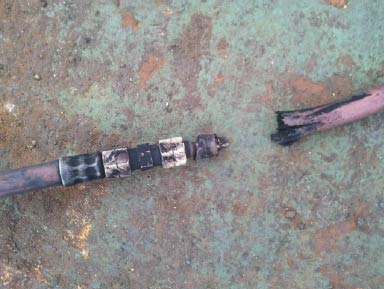
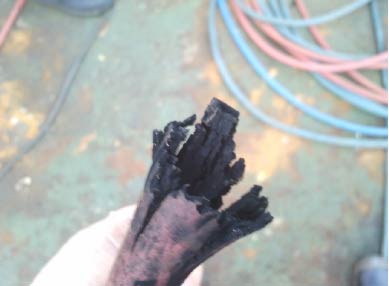
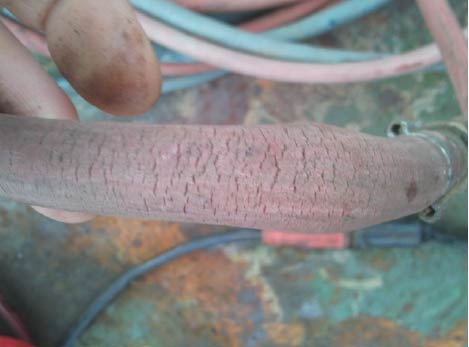
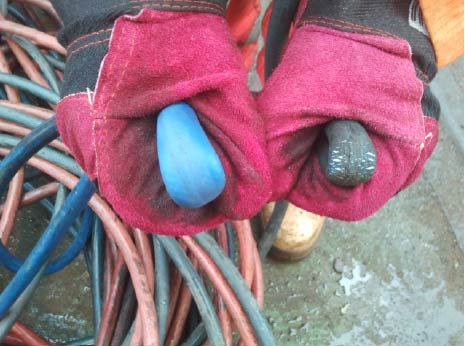
Our member’s investigation noted the following:
- The primary safety condition breached in this incident was: always use the correct tool safely to carry out the job;
- Following the incident an inspection of the hoses revealed brittle and perished sections along the whole hose;
- It was suspected that the non-return valve on the cutting torch was inoperative, allowing a ‘flashback’ to take place within the hoses;
- Pre-use checks by the welders revealed that they set up the equipment without leak checking connections prior to using the equipment;
- The sub-contractor had a suitable leak detection substance but none was available at the incident site, and therefore the leak testing of cylinders and connectors had not been carried out.
Our member drew the following lessons:
- Use a proprietary leak detecting spray or solution suitable for use with oxy/fuel systems, to check all fittings prior to use. Soapy water or solutions containing grease or oils should NOT be used on oxygen systems;
- Leaking or damaged components should be replaced immediately;
- Leaking hoses should not be repaired, but should be shortened to remove damaged sections. The shortening and refitting should be conducted using appropriate and correct tools and equipment designed for that task. Screw tightened crimps (‘jubilee clips’) should not be used, as their use increases the risk of leaks due to the potential for over/under-tightening;
- All welding and cutting equipment should be inspected prior to use, including:
- Condition of hoses any perished hoses should be replaced immediately
- Flashback arrestors are fitted at both gauges
- Non return valves or flashback arrestors fitted at torch side
- Correct hose crimps are used at all fittings
- Leak tested
- Gauges are serviceable
- All fittings are free from oil and grease contaminants
- Ensure thread tape is not used on any connections
- Bottle key in place on acetylene cylinder
- Cylinders securely stored upright
- Bulk gas storage has a minimum separation of 3 meters.
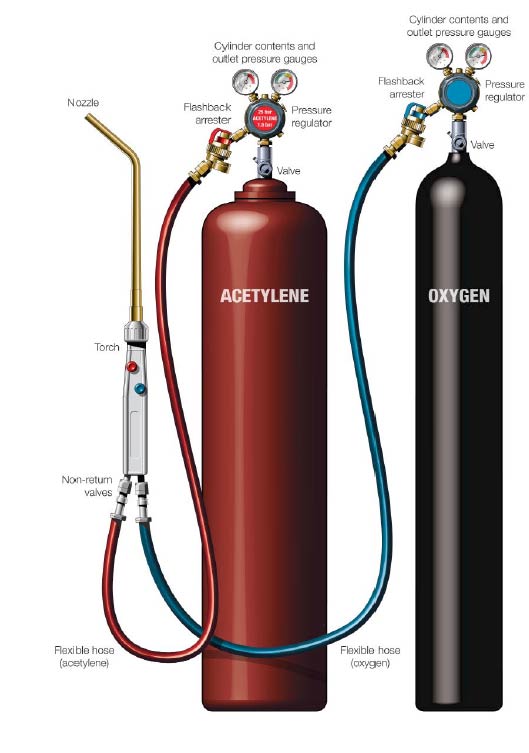
Our member concluded:
- Flashbacks are commonly caused by a reverse flow of oxygen into the fuel gas hose (or fuel into the oxygen hose), producing an explosive mixture within the hose. The flame can then burn back through the torch, into the hose and may even reach the regulator and the cylinder. Flashbacks can result in damage or destruction of equipment, and could even cause the cylinder to explode. The following precautions will help to prevent flashbacks:
- Use the correct lighting-up procedure. Purge the hoses before lighting the torch to remove any potentially explosive gas mixtures. Use a spark igniter and light the gas quickly after turning it on
- Ensure the cutting torch is fitted with spring-loaded non-return valves
- Use the correct gas pressures and nozzle size for the job
- Maintain the equipment in good condition;
- These measures will reduce the risk of a flashback but will not completely eliminate it. Non-return valves will not stop a flashback once it has occurred. Protecting cylinders from flashbacks:
- Fit flashback arresters to both the oxygen and fuel gas hoses near to the regulators. For long lengths of hose, fit arresters on both the torch and the regulator
- The fitting of a flashback arrester is not a substitute for safe working practice. After a flashback, carefully check for damage to the torch, hoses, regulators, flashback arresters and other components. Replace parts if needed.
Members may wish to refer to previous safety flashes relating to the use of oxy-acetylene equipment, some of which are referenced below:
- Abrasion of metal casing
- Poor maintenance and subsequent failure of welding equipment, which also includes a handy pre-mobilisation/demobilisation welding check list
- Small fire and minor injury during gas cutting
- Fire caused by hot work
Safety Event
Published: 20 February 2014
Download: IMCA SF 02/14
IMCA Safety Flashes
Submit a Report
IMCA Safety Flashes summarise key safety matters and incidents, allowing lessons to be more easily learnt for the benefit of all. The effectiveness of the IMCA Safety Flash system depends on Members sharing information and so avoiding repeat incidents. Please consider adding safetyreports@imca-int.com to your internal distribution list for safety alerts or manually submitting information on incidents you consider may be relevant. All information is anonymised or sanitised, as appropriate.
IMCA’s store terms and conditions (https://www.imca-int.com/legal-notices/terms/) apply to all downloads from IMCA’s website, including this document.
IMCA makes every effort to ensure the accuracy and reliability of the data contained in the documents it publishes, but IMCA shall not be liable for any guidance and/or recommendation and/or statement herein contained. The information contained in this document does not fulfil or replace any individual’s or Member's legal, regulatory or other duties or obligations in respect of their operations. Individuals and Members remain solely responsible for the safe, lawful and proper conduct of their operations.
